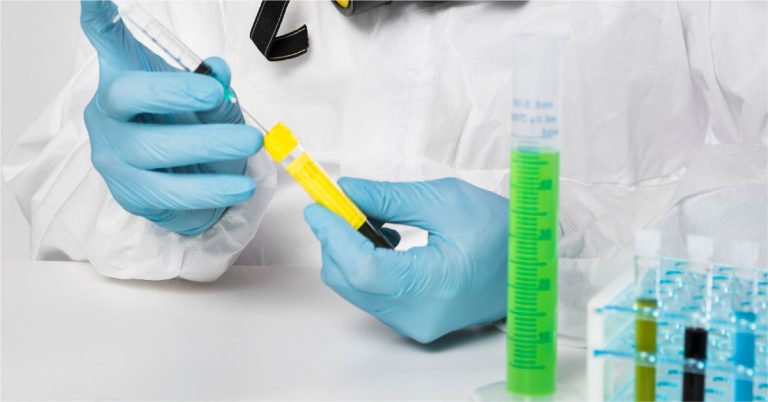Maintaining water quality is essential for various industries and applications, especially in a country like Nepal, where water-related challenges range from microbial contamination to scaling in cooling systems. Biocide chemicals are an integral part of water treatment strategies, offering effective solutions to control harmful microorganisms in water systems. This article explores the benefits of biocide chemical uses and highlights their significance, particularly in cooling tower applications, while emphasizing safety considerations.
What Is a Biocide Chemical?
A biocide chemical is a substance or combination of substances designed to control, inhibit, or eliminate harmful microorganisms such as bacteria, algae, and fungi. These chemicals are widely used in water treatment systems, ensuring that microbial growth does not compromise the efficiency of processes or the quality of water.
In cooling towers, biocide chemicals play a critical role in maintaining system efficiency and preventing problems caused by microbial contamination, such as biofilm formation, corrosion, and reduced heat transfer efficiency.
Benefits of Using Biocide Chemicals
- Prevention of Biofilm Formation
One of the primary biocide chemical uses is to prevent the formation of biofilms in water systems. Biofilms, which are colonies of microorganisms adhering to surfaces, can significantly reduce system efficiency and increase energy consumption.
- Corrosion Control
Microbial activity in cooling systems can lead to microbiologically influenced corrosion (MIC), which can damage pipelines, cooling towers, and other equipment. Biocide chemicals for cooling towers mitigate this risk by eliminating the microorganisms responsible for corrosion.
- Enhanced System Efficiency
By controlling microbial growth, biocide chemicals help maintain clean surfaces within water systems, improving heat transfer efficiency and reducing operational costs.
- Reduced Health Risks
Cooling towers are prone to harboring Legionella bacteria, which can cause Legionnaires’ disease—a severe form of pneumonia. Using biocide chemicals minimizes this health risk by effectively controlling bacterial growth.
- Cost Savings
Regular use of biocide chemicals reduces the need for frequent maintenance, repairs, and replacements caused by microbial damage, resulting in long-term cost savings for industries in Nepal.
- Versatile Applications
Biocide chemical uses are not limited to cooling towers. They are also employed in wastewater treatment, swimming pools, and industrial water systems, demonstrating their versatility and importance in various sectors.
Biocide Chemicals for Cooling Towers in Nepal
Cooling towers are an essential component of many industries in Nepal, including manufacturing, power generation, and HVAC systems. However, the warm and moist environment of cooling towers makes them a breeding ground for microorganisms, leading to several operational challenges.
Biocide chemicals for cooling towers are specially formulated to tackle these issues effectively. They are available in two primary types:
- Oxidizing Biocides: These include chlorine and bromine-based compounds that kill microorganisms by disrupting their cellular structures.
- Non-Oxidizing Biocides: These are organic compounds that target specific microorganisms without relying on oxidation. They are particularly useful when microorganisms develop resistance to oxidizing biocides.
The choice of biocide chemical depends on factors such as water quality, system design, and the specific challenges faced by the cooling tower.
Safety Considerations When Using Biocide Chemicals
While biocide chemicals offer numerous benefits, their proper handling and application are essential to ensure safety and environmental protection. Here are some key safety considerations:
- Proper Storage and Handling
Biocide chemicals should be stored in a cool, dry, and well-ventilated area away from direct sunlight and incompatible substances. Always use appropriate personal protective equipment (PPE) when handling these chemicals.
- Follow Manufacturer Guidelines
Adhere to the manufacturer’s instructions for dosage, application, and dilution to avoid overuse or underuse, which can compromise effectiveness or lead to safety hazards.
- Monitor Water Quality
Regularly test water quality to assess the effectiveness of the biocide chemical and make adjustments as needed. Overdosing can harm equipment and the environment, while underdosing may fail to control microbial growth.
- Environmental Considerations
Some biocide chemicals can have adverse environmental effects if discharged untreated. Ensure proper disposal practices and compliance with local regulations to minimize environmental impact.
- Employee Training
Provide adequate training to employees handling biocide chemicals to ensure they are aware of the potential risks and safety protocols.
- Use Eco-Friendly Options
Consider using environmentally friendly biocide chemicals that have a lower ecological footprint while still delivering effective microbial control.
Innovative Biocide Chemical Solutions by Ion Exchange
Wet End
The Wet End process includes essential chemicals such as retention aids and biocides that enhance efficiency and product quality. Retention aids like INDFLOC 240, INDFLOC 140 PG4, and INDFLOC 441 help in improving fiber retention, ensuring a smoother and more consistent paper formation. To combat microbial growth, a range of biocides and slimicides are employed, including INDSLIME 1014, INDSLIME 1015, INDSLIME 1016, INDSLIME 1018, INDSLIME 1019, and INDSLIME 1020, as well as ClO₂. Additionally, the Boil Out program, utilizing INDION 7610, is critical for maintaining cleanliness and preventing deposits within the system, thereby ensuring smooth operation and optimal performance of the papermaking process.
INDION Cooling Water Treatment Chemicals
Ion Exchange provides a comprehensive range of environmentally safe solutions designed to manage both open and closed recirculation systems. These specialty chemicals and programs are highly effective in treating various types of water quality, including treated and contaminated raw waters, industrial and domestic effluents, and seawater under diverse system conditions. The product range includes essential components such as Scale Control Additives, Corrosion Inhibitors, Stress Scale Retardants, Bio dispersants, Oxidizing Biocides, and Non-Oxidizing Biocides, ensuring optimal performance and protection for cooling water systems.
Conclusion
Biocide chemicals are indispensable in water treatment, ensuring clean and safe water for a variety of applications in Nepal. Their ability to control harmful microorganisms makes them essential for preventing biofilm formation, controlling algae growth, and maintaining system efficiency. For cooling towers, biocide chemicals are critical to ensuring optimal performance, reducing operational costs, and extending equipment lifespan.
Understanding biocide chemical uses and their application in cooling towers is vital for industries in Nepal looking to improve water treatment systems and ensure compliance with environmental regulations.
Connect with Ion Exchange experts today to learn more about how biocide chemicals can enhance your water treatment processes.


